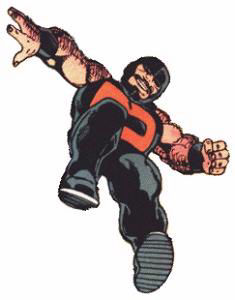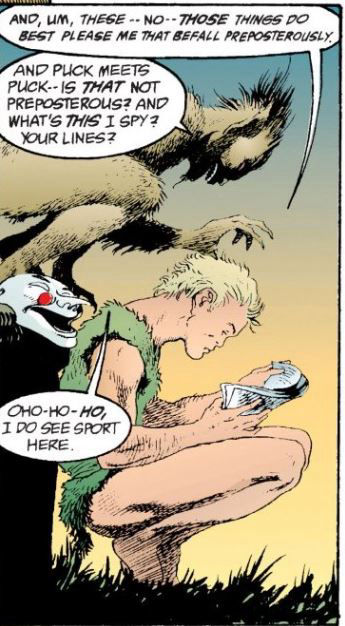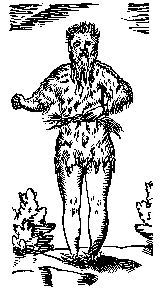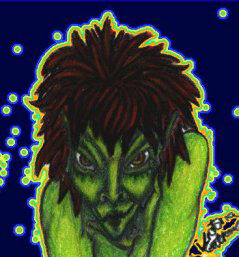
A superhero named Puck
I suppose my first exposure to Puck was a comic book superhero. Eugene Milton Judd aka Puck was a member of Alpha Flight, a team of Canadian superheroes that were spun off from Marvel Comics' Uncanny X-Men. This Puck was a short, gruff, hot-tempered, former mercenary with a heart of gold.
His black costume and tendency to do somersaults and cartwheels suggest that this Alphan took his name from not from the Shakespearean Puck, but from the hockey puck, the black rubber disc used in Canada's national pasttime.
But surprisingly for a bar bouncer, Judd was fond of Shakespeare. And even though he was in great pain from his "dwarfism" (stunted growth in the long bones), Puck went through life with a great sense of humour. (At least until another writer got his hands on the character and made him a whiny, self-pitying idiot made short by magic. But that's too horrible a story to tell. And fortunately, other writers have ignored it.)
A letter to an early issue of Alpha Flight mentioned how Judd took his name from Shakespeare as well as hockey.



Contact Us